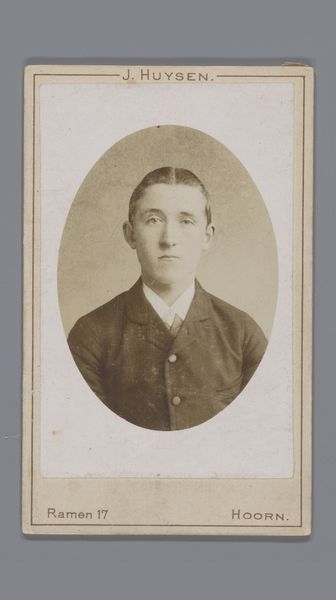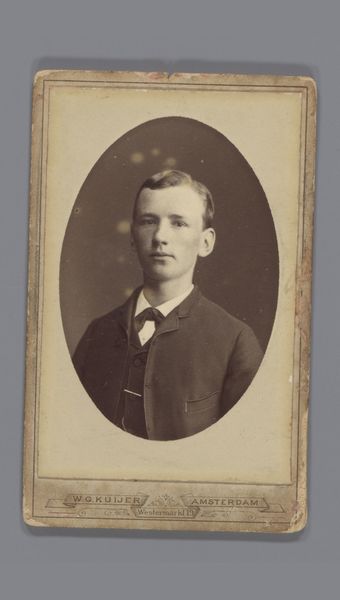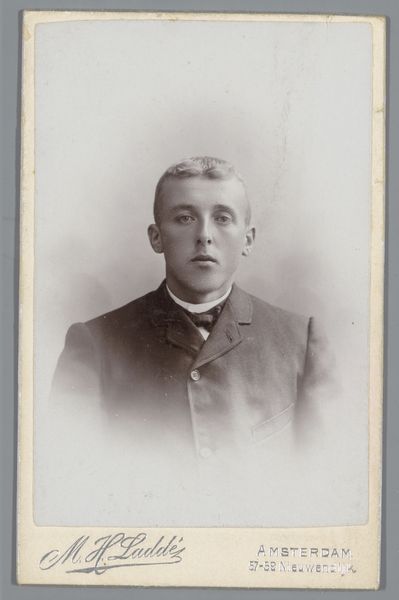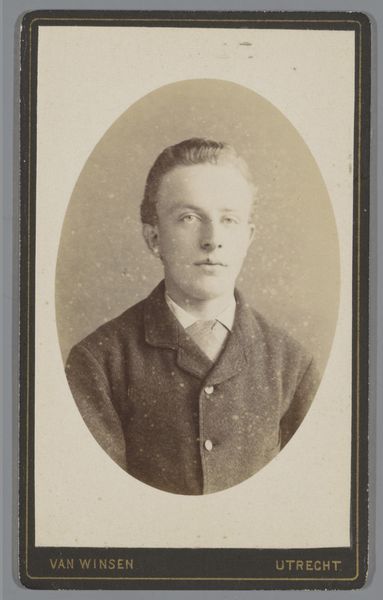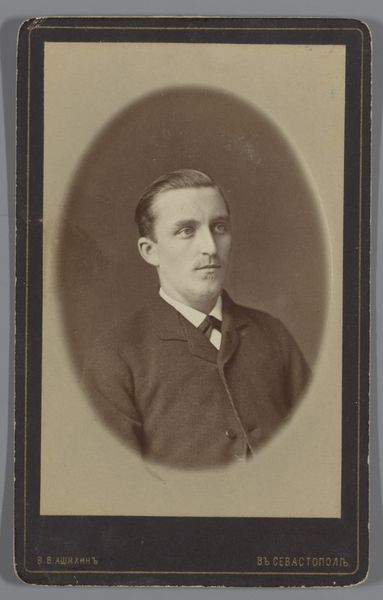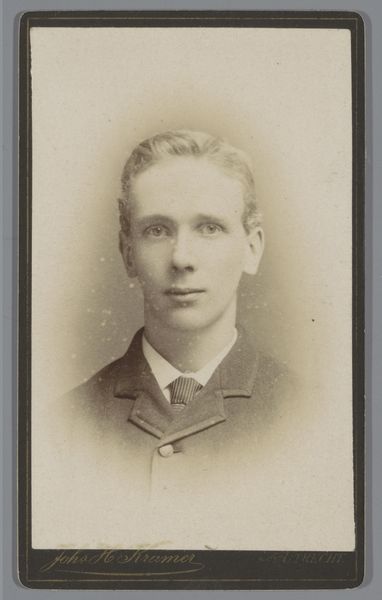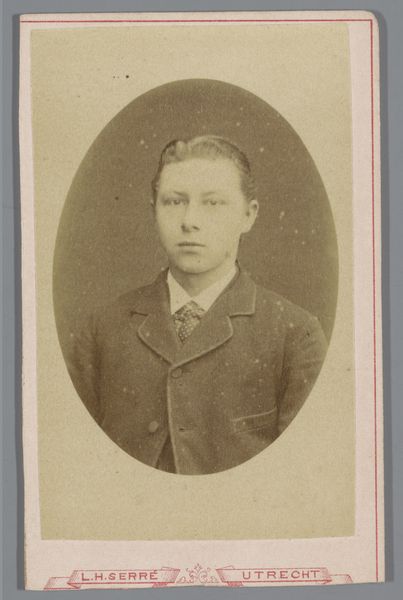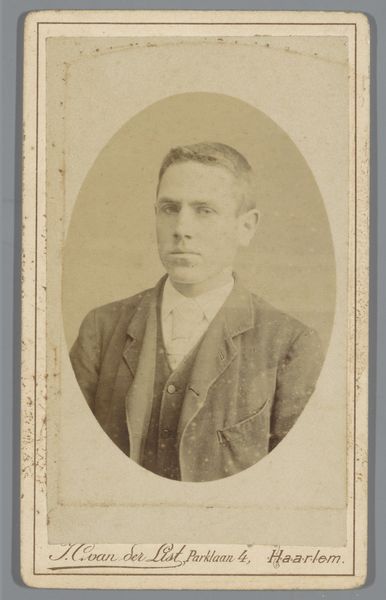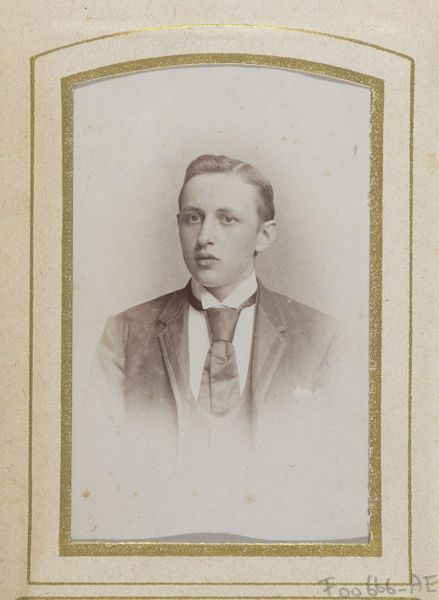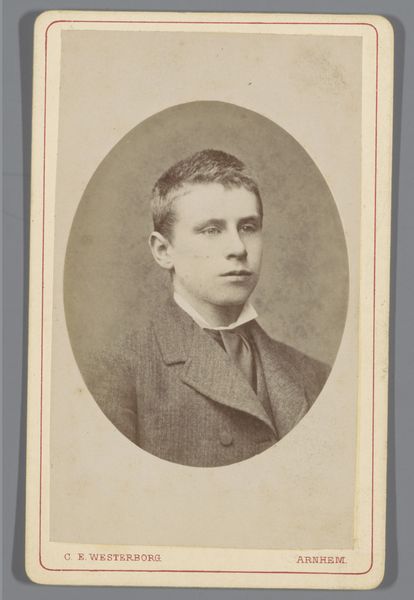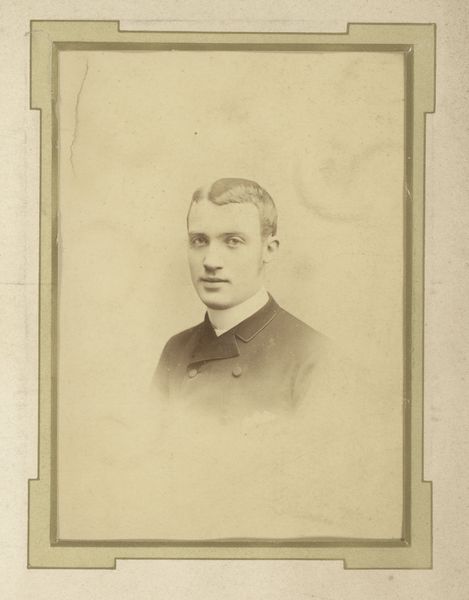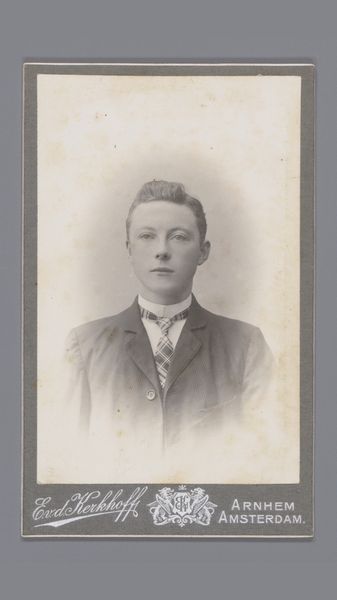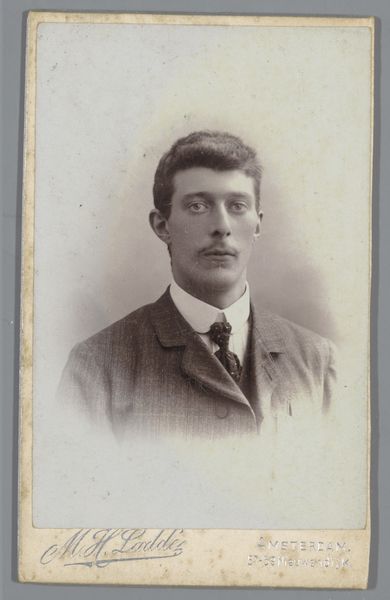
paper, photography
#
portrait
#
paper
#
photography
#
historical fashion
#
portrait reference
#
academic-art
#
paper medium
Dimensions: length 103 mm, width 64 mm
Copyright: Rijks Museum: Open Domain
Editor: So, this is "Portrait of Willem Reijnders" taken sometime between 1880 and 1906 by Willem Gerhardus Kuijer. It's a photographic print on paper. I'm immediately struck by how formal and staged it feels, very much of its time. What's your take? Curator: Indeed. Considering this photograph within its socio-historical context, we see more than just a portrait; we see a carefully constructed image of social identity. Photography, still relatively new, was gaining popularity as a way to record and project one's status. Notice the subject’s attire and pose. Editor: The suit, the tie... It all feels very deliberate. But how does the photographic process itself play into that? Curator: The long exposure times demanded stillness, encouraging formal poses. The monochrome palette and the oval vignette shape – fashionable at the time – add to the sense of timelessness and gravity. This was about creating a lasting impression, a carefully managed public persona for posterity. The Amsterdam studio listed at the bottom gives it context. It gives clues as to the subject's aspirations and the photographer's role in fulfilling them. Editor: So it's less about capturing a likeness and more about creating a… social artifact? Curator: Precisely. These photographs weren’t merely records, but active participants in constructing and reinforcing social norms. And consider the institutions like the Rijksmuseum acquiring such images. They subtly reinforce the values of that era through the act of preservation and display. What do you think that reveals? Editor: It's fascinating to see how even something as seemingly simple as a portrait photograph can tell us so much about the values and power dynamics of the time. I had not thought of its relation to power, only representation. Curator: Exactly, by critically examining images like this, we can learn much about how photography has been used to shape and preserve social memory.
Comments
No comments
Be the first to comment and join the conversation on the ultimate creative platform.
